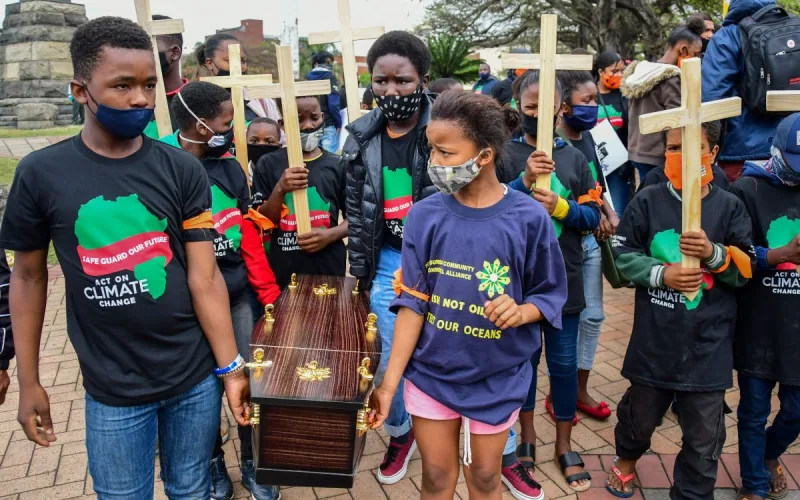For many years, Africa has been a part player in climate conversations on the global stage despite the increasingly adverse effects of climate change on its natural ecosystems. Going forward, this needs to change. As the continent initiates deliberate measures to cement its status as a leader in transformative climate action, its young population will be a key part of the equation. Today, people aged 35 or younger are more than 75% of the total population in Sub-Saharan Africa. Moreover, the Population Reference Bureau (PRB) estimates that young Africans are expected to account for 42% of the total world youth population by 2030. Such high numbers need to be empowered to play a central role in long-term climate action for sustainable outcomes on the continent.
There is no denying that many young Africans have already made attempts, with remarkable success, to get involved in climate action conversations. There are multiple climate lobby groups owned and directed by young people and spread across the continent. The fact that so many of the groups are not being as effective as originally conceptualized should be a challenge to all stakeholders including governments across the continent to empower and create enabling environments for the youth to thrive.
Notably, we have seen the young do amazing work across the continent in helping victims of adverse events like storms and floods. While being on hand to help the affected is great and commendable, the energies should be invested towards preventing the occurrences of these events.
Regardless of whether the conversation is about rapid environmental changes like flooding or about gradual changes like soil erosion, the growing population base need to be empowered to step up and protect the environment in its current state and make it much safer for coming generations.
When the United Nations adopted the 17 Sustainable Development Goals (SDGs) in 2015, much of the focus was trained on the increasingly sporadic environmental changes including steep temperature rises, prolonged droughts and desertification that have made the agricultural sector unsustainable. These, coupled with rising incidences of heat waves and cyclones across the continent is proving to be a hard nut to crack for policymakers. Prediction of possible environmental or climatic outcomes is now harder than any time in history.
The increasing need to protect life on land and below water calls for active involvement of the continent’s youthful population.
Since 2020, the number of births in Africa has averaged 43 million or higher. Families are expanding and the population pressure on natural ecosystems is ever rising. Unless the continent mobilizes all machinery geared towards ensuring that the youthful population is actively engaged in environmental protection and climate action, a lot of our ecosystems will be damaged at an alarming pace. This is already happening.
The complex demographics and diverse interests among African youths is also cause for increased targeted campaigns to develop models of engagement with the natural world that will work in a sustainable manner. There is also need to increase public education on climate action. While the youth have done well in this regard, there is enormous room for improvement to realize more meaningful results across the continent.
As globalization spreads rapidly due to continued integration of communication systems and technological infrastructure, African youth have been the greatest beneficiaries the world over. Innovations and research and development discoveries have certainly risen tremendously on the continent in the past 20 years. It is encouraging that African youth have been at the heart of this revolution and continue to aid it. The potential for how far the utilization of technology can grow to within African society is infinite. As such, integrating technology with climate action initiatives will achieve great results on a sustainable basis, now and in the future.
Climate action advocacy has enormous room to grow almost at par with the widespread adoption of technology by African youth. Interweaving the two will go a long way in effecting behavior change across the continent and enhance youth motivation towards climate action.
Through technology, African youth will have access to knowledge and information on climate change as well as be informed of the actions they can immediately engage in to change the fortunes of the continent on a meaningful basis.
Furthermore, energy saving behavior is a domain that has largely been overlooked in climate action initiatives across the continent. The truth is, the potential to effect change through the adoption of clean energy is one of the most cost-effective methods of environmental conservation.
Throughout the ages, the African continent has relied heavily on its trees and plants to power its industries. Wood fuel and charcoal have been the outstanding sources of energy for households and industries across the continent since the beginning of time. This is only beginning to change but even then, the widespread use is still a cause for concern.
While governments across the continent have done their best to encourage adoption of clean energy solutions across the continent, rural populations (59% of total population on the continent) still utilize wood and charcoal as primary sources of fuel. The acute lack of adequate information on available sources of energy and how to use them is largely to blame. This is a gap the young population can fill effectively.
Today, most youth involved in climate action initiatives and processes face the ‘political block’ in planning and decision-making processes. Governments across the continent should embrace collaboration with the youth to create a sustainable future through effective climate action. We need each other in this.
One of the primary objectives after the conclusion of the Africa Climate Summit, is to pool our resources, expertise, and strengths to tackle the climate crises on the continent. We strongly believe that this can only be possible through the active involvement of the majority of the population which is youthful.
By Brenda Mwale
Editor’s note: – views in the article reflect the views of the writer only!!
